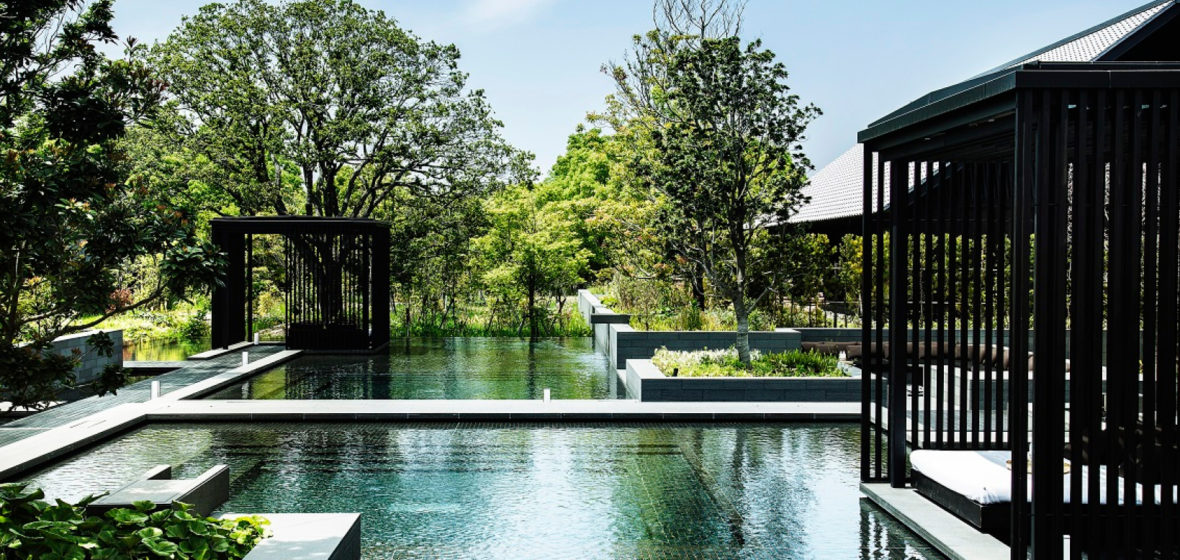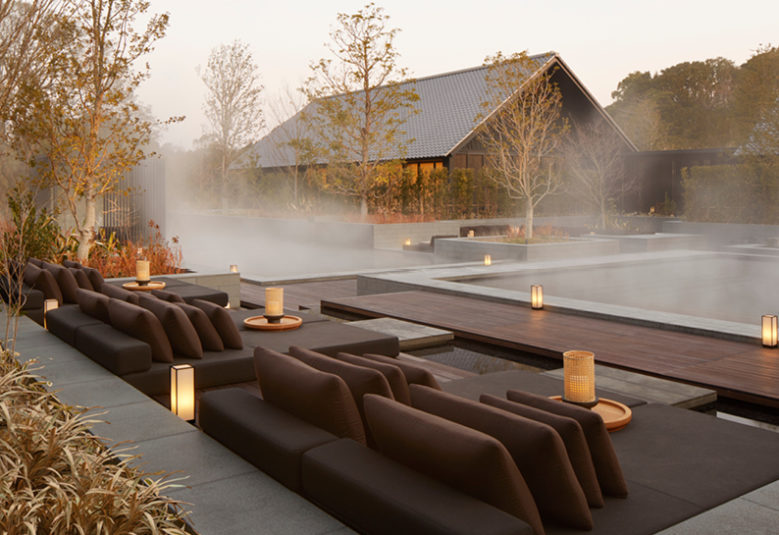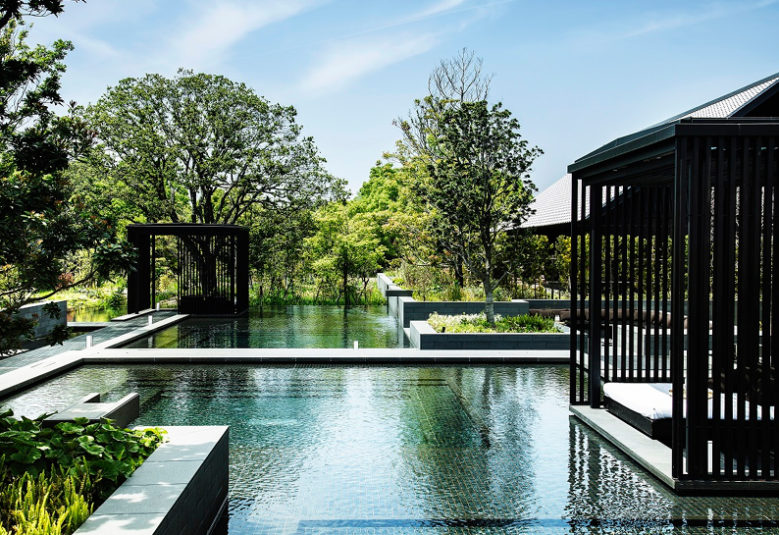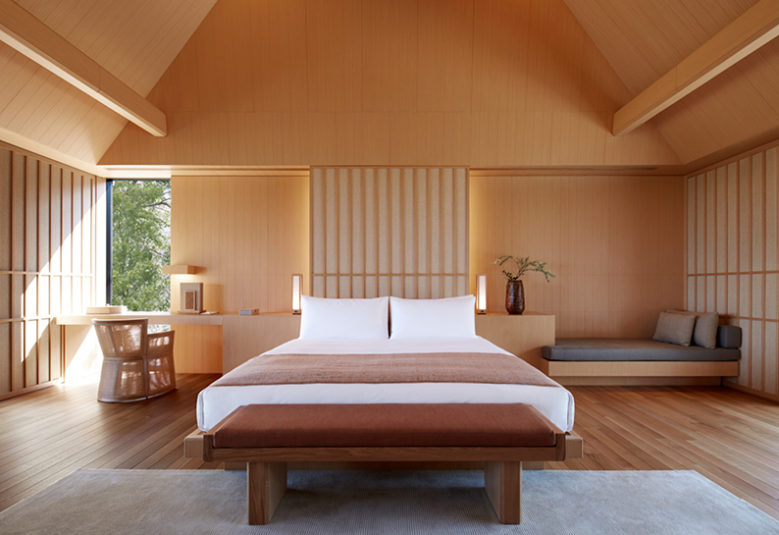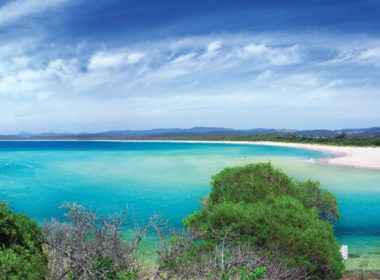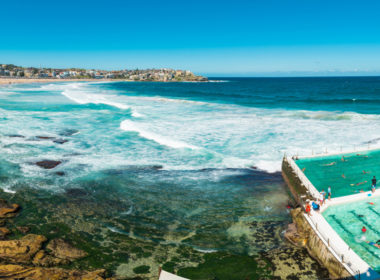Lovers of luxury can now explore Japan’s most sacred landscapes in style
Don’t get me wrong. I love the buzz of Japan’s big cities. I can’t wait to walk once more through the glow of the neon-lit streets and the smoky alleys lined with yakitori bars, to marvel at the department stores where you can wander for hours, and the trains that whisk you across cities in minutes.
What I’m most excited about when I think of returning to Japan, however, is not the cities. It is heading out of town to explore the lush landscapes; places where ancient traditions still thrive. Places like Ise-Shima National Park on the southern coast of Honshu. In this quiet pocket of the country, easily accessible from Osaka, Kyoto and Nagoya, you will find one of Japan’s most luxurious resorts.
Amanemu begins to work its charm on you as soon as you arrive. The winding driveway is lined with maple and cherry trees; the welcome pavilion, where staff are waiting to greet you, overlooks lush rice paddies.
Like a handful of other resorts in the Aman luxury hotel and resort portfolio, Amanemu was designed by the late Australian architect, Kerry Hill, with low-slung suites that open onto decks with serene views across Ago Bay, studded with islets, oyster rafts and crescent beaches.
Similarly seductive views are enjoyed from the resort’s restaurant and bar, set in twin pavilions. The menus are proudly local – from the top-shelf Japanese whiskies, sakes and teas in the bar to the restaurant’s locally-sourced produce, from plump oysters and spiny lobster to Matsusaka wagyu beef.
Looking out at that view is richly relaxing but if you really want to dial up the wind down, the place to head is Amanemu’s superb spa. Sprawling over 2000 metres, its size is equalled by the range of its wellness offerings.
Treatments are matched to the seasons. When the cherry blossoms bloom in the springtime, you will find treatments with Japanese mugwort, neroli and green tea essential oils. As cicadas herald the arrival of summer, lemongrass, mint and lavender appear. And when autumn leaves turn red and orange, peach leaf and shiso are on the menu.
The spa’s most spectacular feature is its outdoor onsen, where guests can soak in mineral-rich water pumped up from the hot springs that have lured travellers to this area for centuries. Throughout Japan, onsen continue to be popular for their health-giving, as well as their relaxing, properties. Few things are as blissful as letting the thermally-heated water ease the tension out of your body.
Unlike traditional onsen, where naked bathing is the rule, swimsuits are compulsory in Amanemu’s onsen. However, if you want to go the traditional route, you can do so in the comfort of your own suite. Each room has a square black basalt tub equipped with not two but three taps, the third one being for thermal water. Be warned that the water will come out at 60 degrees Celsius, so be sure to run the cold tap at the same time. And add some of the hinoki cypress wood bath salts for a blissful, aromatic soak.
The spa’s most spectacular feature is its outdoor onsen, where guests can soak in mineral-rich water pumped up from the hot springs that have lured travellers to this area for centuries.
Of course, visiting the spa is far from the only activity on offer. While the 18-hole golf course next door draws some visitors, most are keen to investigate the area’s more traditional delights. Top of the list is a journey into the surrounding forests, which constitute one of Japan’s most sacred landscapes.
These ancient cedar forests, studded with Shinto shrines, are where Kyoto’s emperors would come to purify themselves. Clad in pilgrim clothing, they would walk from one forest shrine to the next, submerging themselves in icy mountain streams and offering up prayers to the spirits dwelling in the rocks and the trees.
The trails they followed, known as the Kumano Kodo, are still stomped these days: by hikers, by forest bathers, and by those on a spiritual quest of their own. A day spent exploring these ancient paths, breathing in the rich loamy forest smell, is as restorative as any spa treatment.
Just as memorable is the fresh seafood feast I enjoy with another set of local characters: the Ama divers. Famed throughout Japan, these women harvest their catch using free-diving techniques that stretch back 2000 years. They swim hundreds of metres out from shore and then dive to depths of 10 metres, emerging from the waves with a catch of clams and abalone, scallops and fish.
It’s hard to believe the grandmotherly women I meet and laugh with as the seafood cooks on a hot grill are capable of such feats. Clearly, they breed them tough down here.
Checklist
Get there: Qantas is aiming to resume international travel to Japan from December 2021, contingent on government decisions including future quarantine requirements. Amanemu is two-hour train journey or 23-minute helicopter ride from Chubu Centrair International Airport in Nagoya.
Stay there: Suites at Amanemu start from A$1,704.82 AUD per room per night including taxes and daily breakfast.

